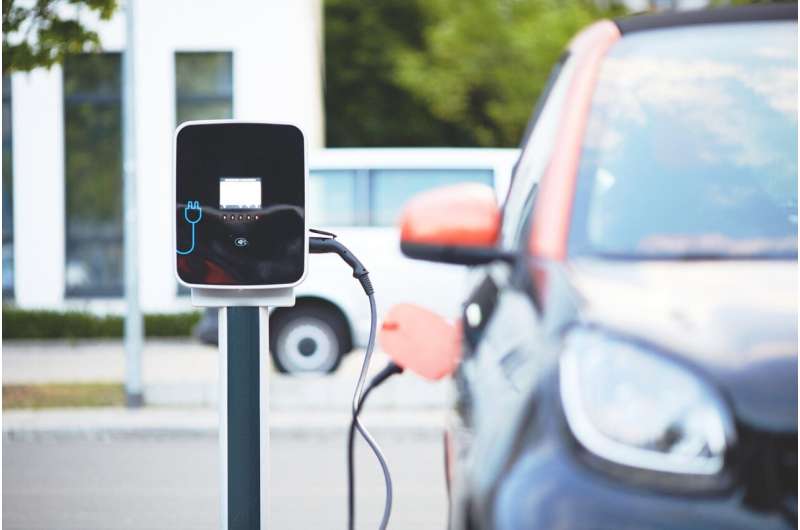Canada's tariff wall on Chinese electric vehicles is deepening dependence on the US

Gaby Clark
scientific editor

Andrew Zinin
lead editor

In October 2024, on all electric vehicle (EV) imports from China, effectively barring consumers from accessing some of the world's most innovative, affordable models. These tariffs are deepening the country's dependence on the United States and undermining its climate goals.
Canada's unusually prohibitive tariff mirrored the strategy of the U.S., which in September 2024.
The government justified its "" by pointing to China's extensive industrial policy, such as subsidies, that artificially lower production costs. The tariffs were claimed to protect domestic producers by offsetting the cost advantage enjoyed by Chinese EV manufacturers.
While this rationale has some basis, it is highly overstated. The into Chinese support for the EV industry revealed , ranging from 7.8% for Tesla Shanghai to 35.3% for the SAIC Group, which subsequently became the basis for imposing countervailing duties.
Agriculture Minister Heath MacDonald —a recognition that the policy may now be outdated.
A year ago, coordinating with the U.S. against China's growing EV industry might have seemed defensible, but today, it leaves Canada in a weakened position in its ongoing .
This policy is misaligned with Canada's long-term interests. It weakens economic independence, slows decarbonization and forces Canadians to pay more for EVs.
Tariffs are distorting Canada's EV market
In July 2025, Tesla sales in the EU even as overall EV sales rose by 39%. BYD, China's biggest EV manufacturer and a rival to Tesla, tripled its sales and in market share.
In Canada, too, Tesla's sales are falling. Its market share is now a fraction of what it used to be and General Motors has in Canadian EV sales.
Still, Canadians continue to buy each year, while plans to sell BYD and other Chinese EVs have come to .
The reason why BYD has risen to the top in the EU but American automakers dominate in Canada is an outcome of Canada's trade policy toward China, which has had the unintended effect of propping up U.S. automakers.
Canada's auto market is already heavily dependent on American manufacturers. Tariffs that deepen this dependence further narrow consumer choice and expose Canadian EV buyers to unpredictable policy shifts in the U.S. It's clear Canada needs a new approach.
A more nuanced strategy
Canada should adopt a more nuanced strategy that safeguards national priorities without stifling competition or limiting consumer choice. Instead of erecting tariff walls that shut out rivals, Canada should gradually open its market to prepare for the inevitable competition from China and beyond.
At the same time, it should offer targeted incentives for top Chinese EV firms to set up plants locally, transfer advanced technology and share technical know-how.
Such a policy would help stabilize car prices for Canadians, who have been hit hard amid .
Although Ottawa ahead of trade talks, levies on autos, steel and aluminum remain in place, keeping costs elevated. These retaliatory measures, while necessary, have burdened Canadian households, for whom vehicle purchases are the third-largest expense.
A freer trade regime with China would substantially broaden the range of affordable EVs available to Canadians, who are currently limited to costly U.S. brands . By contrast, Chinese manufacturers offer numerous , a factor that would likely spur a substantial increase in EV adoption.
Second, access to Chinese EVs would help Canada meet its of 100% zero-emission new vehicle sales by 2035. Since grid is largely powered by renewable hydro and nuclear power, a faster uptake of EVs would significantly reduce emissions.
Third, lowering the tariff would support Canada's pursuit of greater from the U.S.
A moderate tariff, combined with targeted incentives to attract foreign investment from Chinese EV makers, could enhance the global competitiveness of Canada's auto industry. This also aligns with the country's long-term strategy of to set up local operations.
Canada cannot hope to lead in a vital global industry by shutting itself off from competition. It must dismantle tariff walls, welcome world-class rivals and . Only by diversifying its EV supply chain and fostering innovation can Canada secure a key position in the emerging EV economy.
Provided by The Conversation
This article is republished from under a Creative Commons license. Read the .![]()














